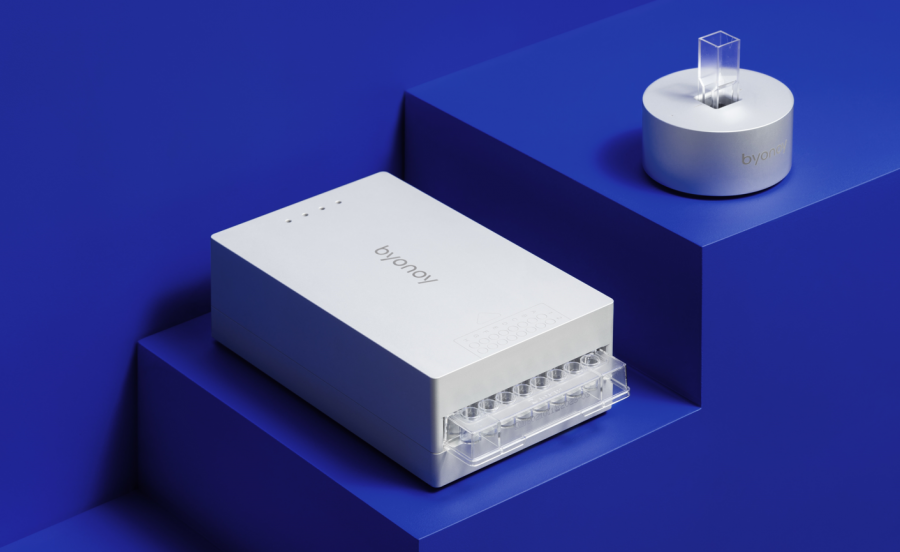Analysing phytotelmata composition of Nepenthes plants in the Bornean rainforest
10/06/2024

Dr. Skylar Johnson using Byonoy instruments to study pitcher plants in the rainforests of Brunei Darussalam.
The Byonoy Absorbance 96 and Absorbance One have been used for protease and carbohydrate assays
Dr. Skylar Johnson from the University of Bristol has used Byonoy instruments to study pitcher plants in the rainforests of Brunei Darussalam on the island of Borneo. The portable instruments, which includes the Absorbance 96 microplate reader and Absorbance One single cuvette spectrophotometer, enables comprehensive research in one of the world’s most demanding environments. Dr. Johnson said, “Our project is centred on investigating the composition of the fluid within pitcher plants, employing spectrophotometers as our primary analytical tool.”
The fluid (phytotelmata) within the Nepenthes plants is a mixture of water and digestive enzymes, yet the compositions appear very different to other Nepenthes species. Dr. Johnson said, “We used the Absorbance 96 to study protein concentrations and perform protease assays to investigate the digestive properties of the pitcher fluid. Meanwhile, the Absorbance One enabled us to understand sugar levels through total carbohydrate assays. This data is now the foundation for ongoing research.”
“The portability of these devices proved instrumental during our field trip…”
“One of the main challenges I think we face is the ability to study plants in their real environment, there is a lot of biochemistry that happens on a bench. Since wild plants are so inaccessible, there’s still a lot of questions surrounding how they work outdoors. So, in a sense, the portability of standard lab equipment is the main bottleneck in our research.”
For three months, Dr. Johnson conducted research in the Bornean rainforests, managing to fit all her scientific equipment into a single suitcase. Dr. Johnson said, “The portability of these devices proved instrumental during our field trip to Borneo, facilitating experiments conducted at field workstations.”

“I plugged it in, and it worked perfectly anywhere.”
The Byonoy Absorbance 96 is highly regarded for its user-friendly software and remarkable portability, making it an invaluable tool. Reflecting on her experience, Dr. Johnson emphasised the compact design, stating, “One of the standout features is the easy portability. This was crucial during our experiments since transporting samples to the nearest university, a two-and-a-half-hour journey, wasn’t feasible. The convenience of conducting analyses on-site was indispensable.”
She added, “The user-friendly software was a significant plus. Its simplicity made the process efficient and saved valuable time. Moreover, the reliability of the spectrophotometers was impressive; repeated measurements consistently yielded accurate and dependable results."
“…the possibility of spontaneously measuring multiple wavelengths with the Absorbance 96 will come in handy.”
Dr. Johnson already has plans to use the Byonoy Absorbance 96 in future research. She said, “We have exciting plans to delve into the study of plant-pathogen interactions. One of the key assays on our agenda involves measuring reactive oxygen species, and the Absorbance 96, with its specific wavelengths, aligns perfectly with the requirements for this type of assay. In addition, we also plan to perform an ELISA assay to look closely at specific proteins in the pitcher fluid. The possibility of spontaneously measuring multiple wavelengths with the Absorbance 96 will come in handy.”
Find out more
You can learn more about the Absorbance 96 and Absorbance One by clicking the button below to speak to a product specialist directly.